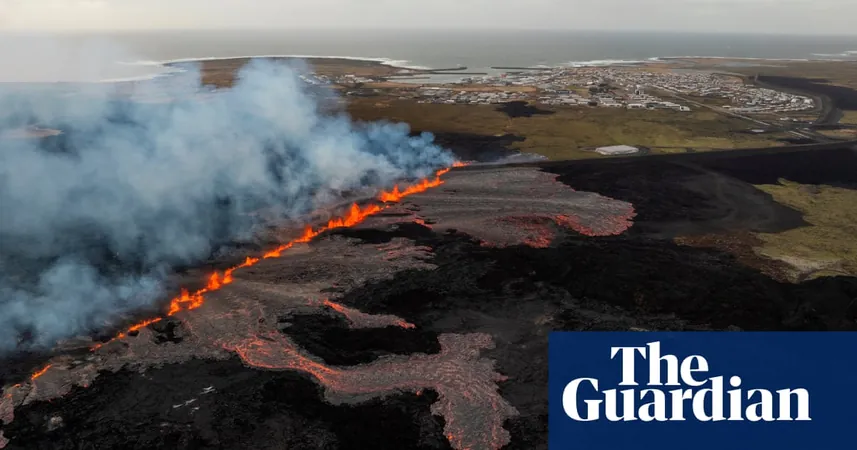
Volcanic Eruption Forces Evacuations in Iceland’s Grindavík and Blue Lagoon Spa
2025-04-01
Author: Yan
In a dramatic turn of events, the town of Grindavík and the iconic Blue Lagoon spa in Iceland have been evacuated following yet another volcanic eruption in the region. This eruption marks the 11th since 2021, a period that has seen the Reykjanes peninsula, located south-west of Reykjavík, become increasingly active.
The Icelandic Meteorological Office (IMO) reported an “earthquake swarm” early in the morning, initiating around 6:30 AM at the Sundhnúkur crater row. By 9:45 AM local time, a significant eruption occurred just north of Grindavík, leading to lava and smoke pouring from an orange-red fissure. The situation escalated quickly, with the fissure extending 1,200 meters by midday and invading the town's protective barriers.
Timelapse footage captured the intense spectacle of magma bursting forth near Grindavík, as authorities warned that the fissure could continue to grow potentially moving further south. A second fissure has since opened up closer to the town, raising alarms about the sudden geological shifts occurring beneath it.
Reports also indicated that a hot water pipeline in northern Grindavík had sustained damage, confirming that major fault movements had affected the town's infrastructure. Despite a drop in volcanic activity later in the afternoon, the seismic movements remained a cause for concern among emergency responders.
Grindavík, which has been largely deserted since November 10, 2023, due to the previous eruption's aftermath, has seen most of its 3,800 residents displaced. Although a few individuals resisted evacuation, local police confirmed that they have successfully removed most residents from the danger zone.
The Blue Lagoon, renowned for its geothermal spa, announced its temporary closure, prioritizing the safety of its guests and staff as the eruption unfolds. Ch Supt Runólfur Þórhallsson, Iceland’s director of civil protection, urged any remaining residents to evacuate, emphasizing the potential for a far larger eruption due to a longer magma tunnel and an accumulation of lava beneath the surface.
In addition, the IMO noted that seismic signals recorded in the area indicated considerable magma movement, stressing that residents in Grindavík could still feel tremors and observe signs of ground deformation—factors that imply the risk of further geological disturbances.
While the Icelandic tourist board has assured that there is currently "no threat to the population" and flights continue to operate normally from Keflavík airport, they have restricted access to the danger zone and are monitoring gas pollution linked to the eruption.
Interestingly, despite earlier fears about the impact of these volcanic events on tourism, recent statistics show that the number of visitors passing through Keflavík airport increased by 2% in the current season. The tourism board anticipates that as more information becomes available, they will be ready to respond to changing conditions in the region.
As Iceland grapples with its volcanic activity, the resilience of its residents and the adaptability of its tourism sector are under close watch. Stay tuned for the latest updates on this unfolding situation!


 Brasil (PT)
Brasil (PT)
 Canada (EN)
Canada (EN)
 Chile (ES)
Chile (ES)
 Česko (CS)
Česko (CS)
 대한민국 (KO)
대한민국 (KO)
 España (ES)
España (ES)
 France (FR)
France (FR)
 Hong Kong (EN)
Hong Kong (EN)
 Italia (IT)
Italia (IT)
 日本 (JA)
日本 (JA)
 Magyarország (HU)
Magyarország (HU)
 Norge (NO)
Norge (NO)
 Polska (PL)
Polska (PL)
 Schweiz (DE)
Schweiz (DE)
 Singapore (EN)
Singapore (EN)
 Sverige (SV)
Sverige (SV)
 Suomi (FI)
Suomi (FI)
 Türkiye (TR)
Türkiye (TR)
 الإمارات العربية المتحدة (AR)
الإمارات العربية المتحدة (AR)